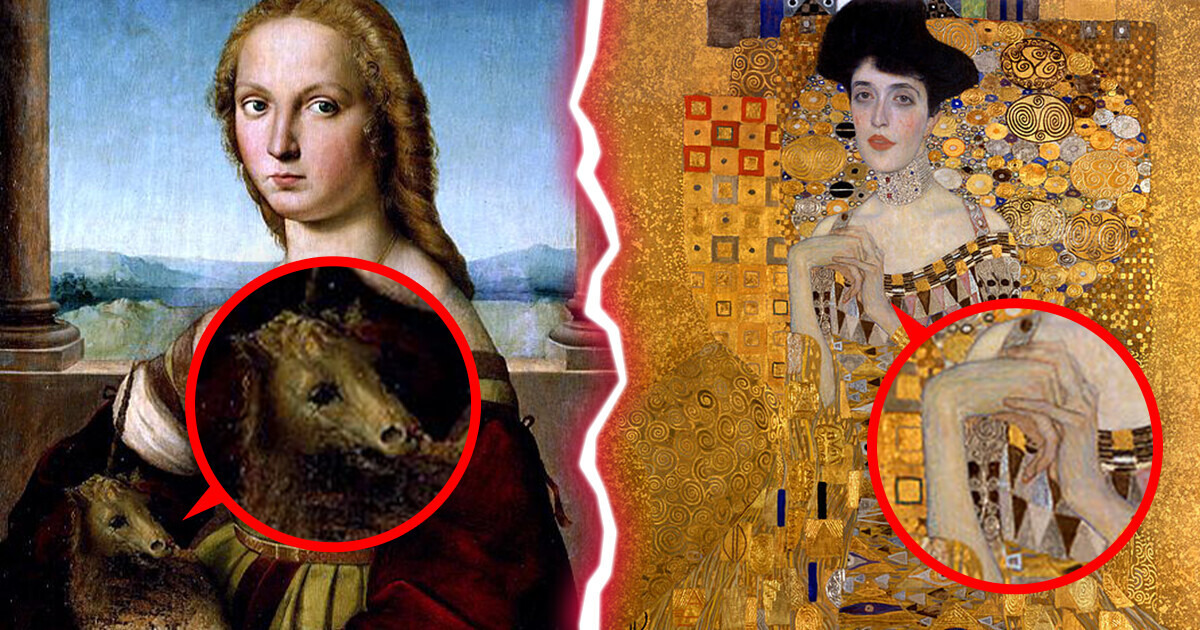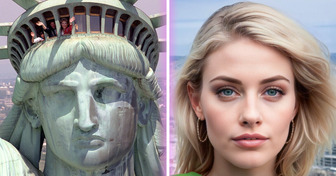13 Dramatic Pets Whose Vet Visits Could Be Turned Into a Movie


Art is not just paint on canvas or lines on paper. Behind some of the world’s masterpieces, there is not only a popular story, but also a mystery that the artist left for those who are ready to see deeper than just the surface. In this article, we will reveal the secrets behind 8 famous paintings that will make you look at them in a new way.
This painting attracts particular attention because of the theory connected to its origin. Some scholars suggest that it may have been inspired by Leonardo da Vinci’s The Last Supper, although this hypothesis is not widely accepted among art historians. Nevertheless, the figure of the white waiter and the people who surround him are remotely reminiscent of the composition and imagery characteristic of Leonardo’s work.
Leonardo da Vinci’s masterpiece, created more than 500 years ago, has been seen in museums by a huge number of people. But it was only after the high-resolution enlarged images of the Mona Lisa were examined that scientists found something unusual in her eyes — a code of letters and numbers. The symbols are not visible to the naked eye, but when magnified, they can be clearly seen.
Despite the age of the painting, it was possible to discern hidden symbols in the left eye of the Mona Lisa, which are a combination of letters and numbers, and the right eye contains the letters LV, which, as researchers assume, denote the initials of Leonardo da Vinci.
Gustav Klimt repainted Adele’s portrait more than 100 times. The point is that he wasn’t happy with one detail of her appearance — a slightly deformed finger, which she tried to hide, and therefore her hands were always in an unnatural position. Eventually, the painter managed to find just the right gesture for his composition.
A New York museum acquired this portrait of a young woman in 1917. It was believed to have been painted by the famous French artist Jacques-Louis David, and critics praised the work. However, a few decades later, researchers questioned the fact that the painting belonged to David’s brush — it was allegedly painted by his student.
And after this discovery, critics suddenly began to find flaws in the portrait, “Although the painting is extremely attractive as a period piece, there are certain weaknesses of which a painter of David’s caliber would not have been guilty.”
And half a century later, the artist Marie-Denise Villiers was recognized as the author of the painting. The sitter who posed for her had once wanted to become a professional artist, but instead decided to give up art after she married.
A Girl Asleep by Vermeer is an example of ingenious composition in a genre scene. However, not everything is simple: X-ray examination showed that Vermeer originally intended to have a completely different background of the painting. Thus, a man was supposed to stand behind the girl, and a dog was sitting in the doorway. But in the end, both the man and the dog were replaced by a mirror on the wall and a chair placed at an angle.
Australian researchers used X-ray to uncover another face hidden beneath a female portrait by the brush of the French impressionist Edgar Degas.
It has long been known that the Portrait of a woman has a hidden painting underneath, but the details have always remained a mystery. Now, however, researchers were able to get a better look at the second layer and made an educated guess as to who the woman was — the French model Emma Daubigny, for whom Degas reportedly had a particular fondness.
One of Raphael’s most famous works is Young Woman with Unicorn. In the late 1950s, scientists X-rayed the canvas and discovered that the unicorn was originally a dog. They concluded that the portrait was commissioned for a wedding, as the dog was a symbol of fidelity and indicated marriage.
But some experts believe that the engagement was canceled, and the artist had to paint the unicorn over the dog to tell the world that the heroine of the canvas was innocent. After all, according to legend, only a young and pure maiden could tame a unicorn.
Vincent van Gogh was very poor and often reused his canvases. The painting Patch of Grass shows a close-up of a field. The artist zooms in on each individual blade of grass and flower and paints them in great detail in a light and colorful palette.
Thanks to X-ray, scientists discovered a previously unknown portrait by Van Gogh hidden behind this idyllic painting. The portrait shows a woman wearing a bonnet. The strong contrast between the somber colors of this image and the light, cheerful palette of the upper layer is remarkable.
The Goldfinch was painted in the 17th century and was lost for more than 2 centuries after the artist’s death before being rediscovered in Brussels. The wooden panel on which the bird is painted is atypically thick for a small painting and indicates that it may have previously been part of a larger piece of wood, such as a door or window frame, to create an illusion of a real bird.
During the restoration, it was discovered that there are many small dents in the surface of the painting, which appear to have formed when the paint had not completely dried, otherwise cracks would have appeared. According to one version, the damage was caused by the explosion of the gunpowder store in Delft, which killed Carel Fabritius.
And here are 10 famous paintings that have fascinating stories behind them.











